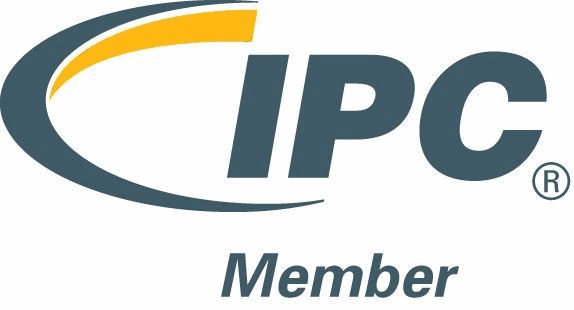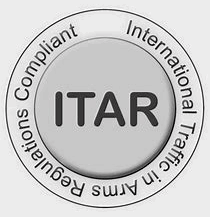Flux and cleaning intricately intertwine, with neither being separable from the other in discussion. The assortment of fluxes and cleaning procedures wield a pivotal influence over the manufacturing yield and dependability of electronic assemblies. After the soldering process, the elimination of any corrosive residue from the surface becomes imperative.
In this article, we’ll dive into the various flux varieties and their applications, followed by an exploration of diverse cleansing agents and methodologies.
The Role of Flux
Flux serves the purpose of bridging two metallic surfaces together, whether through welding, brazing, or soldering. Despite their differing temperature ranges, these processes essentially function alike. In all three cases, flux serves to eradicate oxides, enabling a robust bond between the contacting surfaces. The differentiator lies in the necessity of post-process cleaning for electronic assemblies. The process isn't complete until residues are removed post-joining, as omission can lead to potential field malfunctions, contingent upon the components and flux types utilized.
Copper and tin are the commonly encountered metallic surfaces in soldering. Just as most metals tend to oxidize, these two aren't exceptions. However, the formation of intermetallic bonds necessitates the removal of these oxides. Flux aids in establishing a fresh, pristine interface between copper and tin—this remains consistent whether working with tin-lead or lead-free compositions. The role of flux extends beyond oxide removal; it reduces solder surface tension, enhancing spreading and wetting, which, in turn, enables dependable solder connections. Furthermore, it safeguards solder against oxidation during soldering. Nitrogen could also be used for additional oxidation protection, though it plays no role in the formation of the intermetallic bond.
Implications of Flux Usage
The necessity of flux comes with its own trade-offs. As we've discussed, flux is imperative for optimal solder joints. However, the aftermath of soldering—how should one handle the flux residues? The answer is contingent upon the potential harm posed by these residues. Depending on their adverse effects, one might leave them or opt for their removal.
The nature of flux residues requiring removal or cleaning is chiefly influenced by the flux type. Moreover, during storage and handling, various contaminants, including halides and oxides, are introduced. Aggressive fluxes can mitigate the impact of oxidation and contamination, making soldering feasible even with slightly oxidized components and boards.
The chosen cleaning method hinges on the type of flux, the contaminants at play, and the assembly nature. For instance, assemblies combining surface mount technology (SMT) and through-hole components might necessitate one cleaning procedure post-reflow soldering, and another after wave soldering. In contrast, a fully SMT assembly on both sides could require just one cleaning process after the second side's reflow.
In scenarios involving no-clean fluxes, cleaning might not be mandatory. No-clean fluxes, employing chemicals like carboxylic acids for deoxidation followed by evaporation, leave no active substances on the surface. Yet, no-clean fluxes demand immaculate surfaces for soldering to avert elevated defect rates.
Diverse Flux Varieties
Four principal flux types branch out into six subcategories each, yielding a total of 24 potential flux options. However, the inorganic flux category (IN) is unsuitable for electronics due to its excessive aggressiveness, leaving us with 18 viable flux alternatives.
The four major flux divisions encompass rosin (RO), resin (RE), organic (OR), and inorganic (IN). Each type contains three activity tiers—low (L), medium (M), and high (H)—with or without halides. When you crunch the numbers, it yields 24 distinct flux categories. Halide-free fluxes have designations ending with 0, while halide-containing ones conclude with 1. For instance, halide-free rosin flux would be labeled ROL0, whereas its halide counterpart is ROL1.
This nomenclature extends to RE, OR, and IN fluxes. The halide content in L1, M1, and H1 falls under the brackets of less than 0.5%, 0.5 to 2%, and above 2%, respectively. The activity in halide-free fluxes stems from naturally occurring acids. Greater flux activity yields better soldering outcomes, but heightened activity necessitates thorough cleaning to ward off field corrosion. No-clean fluxes can belong to the RO or RE category, with or without halides. However, OR fluxes must be halide-free (ORL0) to be classified as no-clean.
Notably, the electronics industry doesn't favor inorganic (IN) fluxes due to their excessive reactivity.
An Array of Cleaning Agents and Techniques
Surface mount assembly cleaning might seem challenging, given the close spacing between components and the board. This could trap flux, complicating its removal. Nonetheless, by judiciously selecting cleaning processes and equipment and maintaining control over soldering and cleaning, even aggressive fluxes shouldn't pose issues for cleaning surface mount assemblies. It's crucial to underscore that when working with aggressive water-soluble fluxes, meticulous process control is paramount.
The cleaning approach is contingent upon the flux type.
Rosin and resin fluxes can be cleaned using diverse solvents—organic, aqueous, or semi-aqueous. Aqueous solvents might require additives. No-clean fluxes, if cleaned (as is occasionally the case), can also be treated with these solvents, albeit specialized formulations might be essential. Water-soluble fluxes find cleansing allies in water, with or without additives.
Cleaning may entail solvents, deionized (DI) water, or a combination. In the past, CFCs like Freon were common solvents, but environmental concerns led to their banishment. The industry shifted to alternative solvents, water-soluble fluxes, or embraced "no-clean" approaches through low-residue or no-clean fluxes and pastes.
Modern technology with no-clean or low-residue fluxes is steering toward reduced cleaning necessity. Nonetheless, the no-clean flux path requires a clean environment and cultural changes affecting users and suppliers. Moreover, effective no-clean flux usage might require controlled soldering atmospheres aligned with their lower activity.
The mounting environmental concerns surrounding fluxes mandating cleaning and the disposal of lead-containing solvents are amplifying the adoption of no-clean fluxes. Yet, it's vital to bear in mind that the activity level of no-clean fluxes might be lower, potentially impacting soldering outcomes. Addressing this challenge requires not only internal adjustments but also cooperation from component and board suppliers.
What You Should Take Away
Irrespective of the fluxes, cleaning agents, or methodologies employed, they all must align with consistent standards. When working with highly active fluxes, appropriate solvents must be used to purge contaminants capable of fostering dendritic growth and corrosion-related field issues. Yet, determining the threshold of cleanliness proves more intricate. While J-STD-001 and IPC 610 lay out benchmarks, ascertaining the extent of "clean" isn't all that straightforward. One must use IPC requirements as a guideline, as always, but there will be different interpretations of “clean” depending on the project at hand, the assembly’s end use application, as well as internal standards set by the manufacturer and customer alike.




